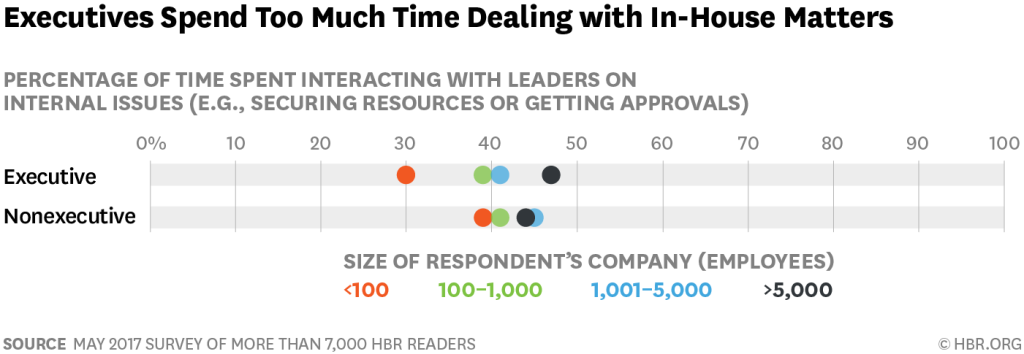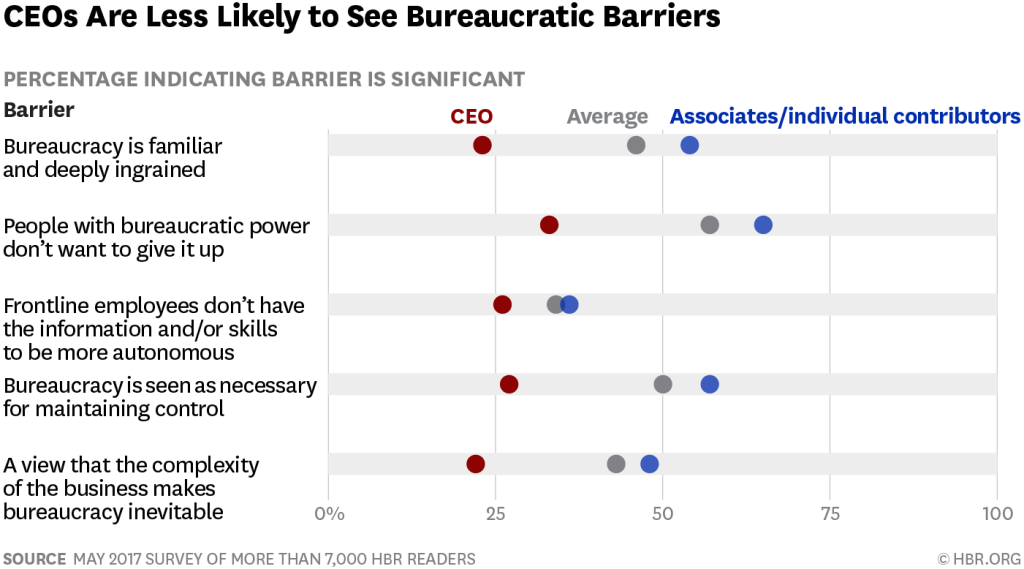I first read this catchy acronym in the Harvard Business Review here. It’s not a subtle metaphor, but very easy to understand. Apt. Vivid. In the United States, we have a huge obesity problem, and frankly, the same thing exists in corporations. This is not restricted to this country or just to publicly-traded companies. Global. Non-profits. Governments. Does not matter – organizational bloat, bureaucracy, chaos, and temerity are everywhere. As consultants, we see inefficiency every day. Personally, I would say 1/3 of my consulting work has been related to complexity and bureaucracy reduction.
Can we rate / rank / measure this?
Cue the music for the metrics. Gary Hamel and Michelle Zanini surveyed 7,000+ HBR readers about their workplace and used the 26 question survey as inputs for their BMI scoring. Essentially: how bureaucratic is your workplace?
Do we trust the data?
As I have told readers of this blog, survey design can be tricky, so always take survey results with a grain of salt. Here are the survey questions here. Yes, HBR readers will definitely skew bourgeois and educated (HBR costs $12 an issue in print), but the sample size is large and the questions are fairly worded. The findings will resonate with most of you.
1) Bigger is more bureaucratic
This confirms what most of us have long suspected: large companies suffer from managerial diseconomies of scale. – Gary Hamel
2) The problem is getting worse
Hamel notes that nearly 2/3 of respondents said bureaucracy is getting worse. The most vocal dissatisfaction comes from folks who are closest to the customer and held accountable for results – production, sales, business development, customer satisfaction. When the company delays, disappoints, or confuses, the front line suffers.
3) Wasted time
Respondents said that 28% of their time was spent on bureaucratic chores (e.g., reports, meetings etc), and less than 40% of people found it helpful. More alarmingly, senior executives spend almost 1/2 of their time with internal issues. Peter Drucker would not have been impressed.

4) It’s not adding value
40% of people said that a 1/3 reduction in headcount would either not affect or improve value delivery to customers. Whoa – that is pretty extreme talk. My counterargument might be: they don’t understand what others do – ergo, it’s easy to write them off as unproductive. This is also why bureaucracy is not getting fixed – problems just get pushed to other parts of the organization without understanding the entire workflow.
5) It’s exhausting
No surprise, bureaucracy makes it an un-fun place to work. Slow, repetitive, dehumanizing, risk-averse, and political. More than 2/3 of people said that political skills “often” or “almost always” helped to determine who gets ahead. No surprise, but so sad.
Executives may not see the problem
Take a look at the graphic below. CEOs (shown with the red dot) tend to see less bureaucracy, consider it less sticky, don’t believe it is necessary for the work to get done. Quite a contrast from the individual contributors (blue dot).

Bureaucracy is a simple and common story. Companies start out scrappy, on a mission for their customers. Over time, this success breeds complexity. Complexity kills. It’s an S-curve. Starts out with enormous energy, then slows down, then plateaus. Eventually. Stalled. Out. Inert.
Bain has been talking about this for some time. They call it the Founder’s Mentality.
So, what can we do?
How do we combat this?
- Always keep the end goal in mind. What is critical to quality?.
- Reduce complexity whenever you can. Take a risk and clean up.
- Culture and honesty. Is this a safe environment to call out the waste?
- Don’t become a mid-level management mailman
- Add more value. Become a mini-expert.
- Be so good they cannot ignore you.
- Work in projects and teams. Shrink the time frame, double the intensity.
- Work with people you like. Value your time.
- Make every meeting count. Write meeting minutes.
- Automate the low-value parts of your job. Free up white space.
- Hire a consultant.
